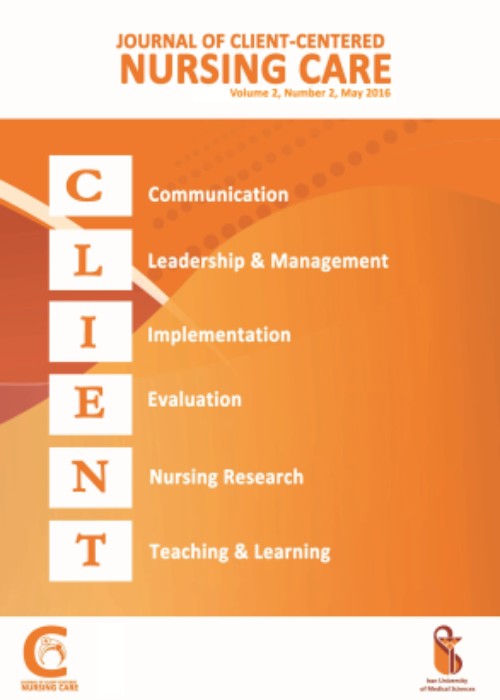New Evolutionary Gamification in Patient’s Education
Author(s):
Article Type:
Letter (دارای رتبه معتبر)
Abstract:
Patient’s education as the core of nursing care is one of the essential rights of the patients, too. Nurses should apply effective and applicable methods to teach their patients properly. The role of healthcare team, especially nurses, is very important in adopting suitable educational methods and consequently patients’ adherence to their treatment regimens. The World Health Organization (WHO) has frequently pointed out that appropriate patient’s education during discharge helps them adhere to their treatment regimens and this in turn leads to the shorter hospitalization, lower mortality rate, and consequently better health economics (Maningat, Gordon & Breslow 2013).
Regarding the importance of patient’s education, North American Nursing Diagnosis Association (NANDA) and Nursing Intervention Classification (NIC) have seriously highlighted the risk of ineffective patients’ treatment regimens due to unawareness or incorrect awareness as a nursing diagnosis (Butcher et al. 2018; Gordon 2014). According to previous studies, patient’s education is insufficient, and effective educational methods should be employed for people at different age groups and with different literacy levels to improve their understanding about disease conditions and treatment processes (Chi & Demiris 2015).
In the meantime, some authorities believe that with the development of science and technology, the importance of direct educational methods such as lectures, face to face education, group discussions, and teach-back methods is declining and indirect methods such as video games, web-based education, and so on are new opportunities that should be explored.
Accordingly, people are becoming more interested in using these indirect methods because of their advantages such as wide access, interesting presentation, and using them at any time or place. In recent years, an indirect educational method known as Gamification (GF) has been introduced (Sardi, Idri & Fernández-Alemán 2017). This approach was proposed by Detereding et al. (2011). In particular, GF refers to the components that are used in games and implemented in designing applied relationships, so that electronic transactions become quick and enjoyable.
This method provides interaction, reward, and motivation to encourage change in behavior, increase motivation to learn new skills, or increase participation through playing. Indeed, in this educational approach, game and mechanical components are designed for certain purposes such as education and not for playing. Besides their benefits for the patients, they improve interdisciplinary interactions among experts (AlMarshedi, Wills & Ranchhod 2015). This kind of game is not limited to a certain age group and all people can benefit it.
The use of game components in different contexts increases people’s motivation, interaction, and pleasure. Moreover, the sense of success and passing a level of game are encouraging. Moreover, this approach increases social interactions, promotes problem-solving ability, and gains support from people around. Despite vast use of this education method, GF is still a concept and there is no agreement on its accurate definition. Through different studies, GF has been used for teaching patients with different diseases and problems like heart failure, myocardial infarction, rheumatoid arthritis, diabetes, breast cancer, smoking, blood pressure control, and Alzheimer with gaining positive results (Sardi, Idri & Fernández-Alemán 2017; Krasulak 2016). The use of this method has now been increased in developed countries. This method introduced by Anna Sort, a Spanish nursing expert.
In patient’s education context, development and implementation of GF can be an effective step in education process (Kapp 2012; Huang & Soman 2013; Fleming et al. 2017). Patients by having this application in their smart phones have full time access to their required educations and a combination of game components and scientific educations can provide better and enjoyable learning experience with quicker feedback and easier remembrance of the content (Johnson et al. 2016; McKeown et al. 2016).
With the development of technology, everyone has now access to social networks, and by using this new education method, interdisciplinary interactions increase. Thanks to new communication devices like smart phones, this method can be used to make the education more attractive and motivating for the learners.
Language:
English
Published:
Journal of Client-Centered Nursing Care, Volume:4 Issue: 3, Summer 2018
Pages:
173 to 174
magiran.com/p1943290
دانلود و مطالعه متن این مقاله با یکی از روشهای زیر امکان پذیر است:
اشتراک شخصی
با عضویت و پرداخت آنلاین حق اشتراک یکساله به مبلغ 1,390,000ريال میتوانید 70 عنوان مطلب دانلود کنید!
اشتراک سازمانی
به کتابخانه دانشگاه یا محل کار خود پیشنهاد کنید تا اشتراک سازمانی این پایگاه را برای دسترسی نامحدود همه کاربران به متن مطالب تهیه نمایند!
توجه!
- حق عضویت دریافتی صرف حمایت از نشریات عضو و نگهداری، تکمیل و توسعه مگیران میشود.
- پرداخت حق اشتراک و دانلود مقالات اجازه بازنشر آن در سایر رسانههای چاپی و دیجیتال را به کاربر نمیدهد.
In order to view content subscription is required
Personal subscription
Subscribe magiran.com for 70 € euros via PayPal and download 70 articles during a year.
Organization subscription
Please contact us to subscribe your university or library for unlimited access!


